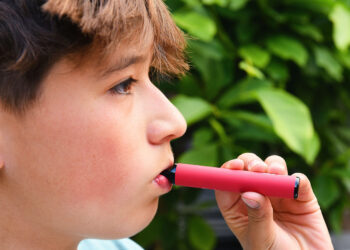TOPLINE:
In patients with rheumatoid arthritis (RA), higher urinary sodium-to-potassium ratio and sodium excretion were correlated with impaired coronary microvascular perfusion and might serve as an indicator.
METHODOLOGY:
- Researchers conducted a cross-sectional study to investigate whether sodium and potassium intake and the ratio between urinary sodium and potassium excretion were associated with cardiovascular disease markers in patients with RA.
- They included 61 adults with RA (mean age, 62.4 years; 78.7% women; 65% reported a history of hypertension) from the outpatient department of a hospital in Greece.
- Assessments included markers of inflammation, estimated glomerular filtration rate (eGFR), disease activity using the 28-joint Disease Activity score, and other relevant parameters.
- Sodium and potassium excretion was calculated using 24-hour urine samples. Daily sodium intake was estimated assuming the urinary sodium excretion of 93%, and daily potassium intake was estimated assuming a gastrointestinal absorption of 77%.
- Coronary microvascular perfusion was evaluated using the subendocardial viability ratio (SEVR) measured with applanation tonometry; arterial stiffness was evaluated using pulse wave velocity and an augmentation index normalised to 75 beats/min.
TAKEAWAY:
- The 24-hour urinary sodium and potassium excretion corresponded to a daily salt and potassium mean intake of 6.7 and 2.1 g, respectively. The mean urinary sodium-to-potassium ratio was 2.4, with only two patients showing an optimal ratio of ≤ 1.
- Urinary sodium excretion was significantly associated with high-density lipoprotein cholesterol levels (correlation coefficient [r], -0.309; P = .016) and uric acid levels (r, 0.301; P = .028).
- Urinary potassium excretion was positively associated with the eGFR (r, 0.371; P = .004), whereas it was negatively associated with disease activity (r, -0.387) and systemic inflammation (r, -0.269; P < .05 for both).
- Urinary sodium excretion (beta [β], -0.247; P = .034) and urinary sodium-to-potassium ratio (β, -0.247; P = .026) were independently and inversely correlated with SEVR. Neither urinary sodium nor potassium (or their ratio) was linked to markers of arterial stiffness.
IN PRACTICE:
“[The study] findings add new evidence to the growing body of evidence regarding the importance of dietary sodium and potassium intake in terms of cardiovascular health, in a well-defined population of patients with RA,” the authors of the study wrote.
SOURCE:
This study was led by Panagiota Anyfanti, 3rd Department of Internal Medicine, Papageorgiou Hospital, Aristotle University of Thessaloniki, Thessaloniki, Greece. It was published online on August 01, 2025, in Clinical Rheumatology.
LIMITATIONS:
The findings were relevant only for patients with RA in the absence of a control group, thereby limiting generalisability. The associations observed in this cross-sectional study may have been influenced by several confounding factors, such as comorbidities and medication use. Reliable data on heart failure were unavailable.
DISCLOSURES:
An open access funding was provided by HEAL-Link Greece. The authors declared having no competing interests.
This article was created using several editorial tools, including AI, as part of the process. Human editors reviewed this content before publication.
Source link : https://www.medscape.com/viewarticle/urinary-sodium-potassium-ratio-may-signal-heart-health-ra-2025a1000l2a?src=rss
Author :
Publish date : 2025-08-11 12:00:00
Copyright for syndicated content belongs to the linked Source.











